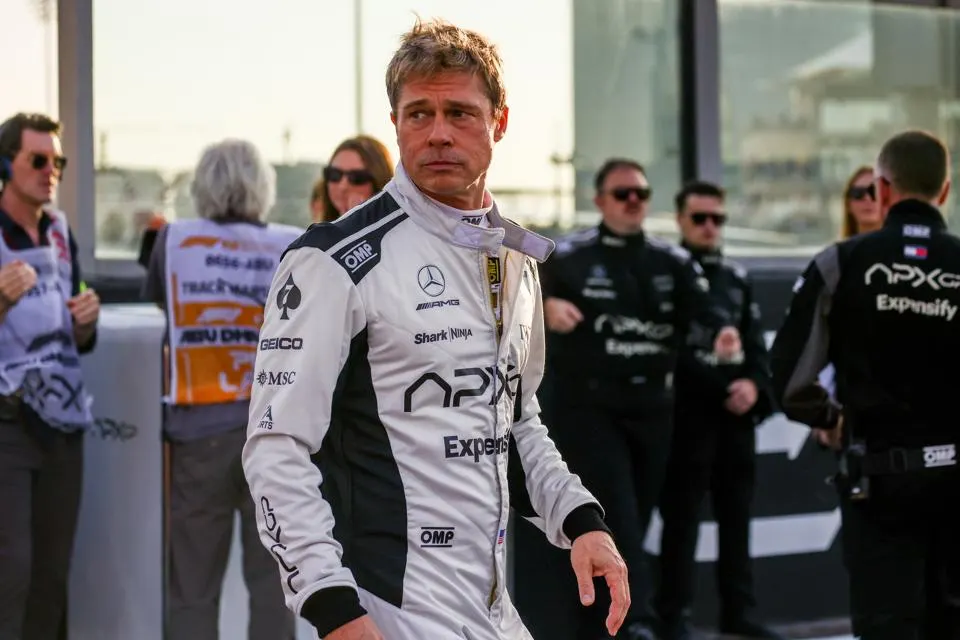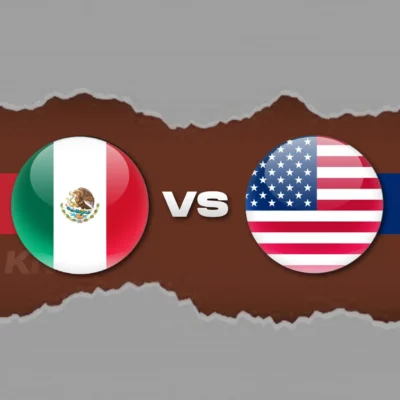When a Hollywood star like Brad Pitt enters the high-speed world of Formula 1, it naturally sparks a lot of curiosity. “F1 The Movie,” produced by Apple and co-created with seven-time F1 world champion Lewis Hamilton, is already making waves even before its official release. The big question on fans’ minds is this: How real is Brad Pitt’s F1 movie compared to actual Formula 1 racing?
In this article, we’ll explore the realism behind Brad Pitt’s portrayal of Formula 1, analyze how close the movie gets to real racing, and take a look at what the filmmakers got right (and wrong) about the world’s fastest motorsport.
A Movie Made in Collaboration with F1 Insiders
One of the reasons fans are excited about Brad Pitt’s F1 movie is the strong team behind it. The film is being directed by Joseph Kosinski, known for Top Gun: Maverick, and produced by Jerry Bruckheimer. Most importantly, Lewis Hamilton is an executive producer and an active consultant for the movie.
That’s a big deal. Hamilton has ensured that the movie reflects the real struggles, techniques, and atmosphere of F1. The filmmakers even partnered with actual F1 teams and the FIA to get access to real races, tracks, and behind-the-scenes action. That’s already a step ahead of many racing movies that rely heavily on CGI or fictional teams.
Filming at Real F1 Grand Prix Events
Another impressive move by the creators of the Brad Pitt F1 movie is filming during actual Grand Prix events. A fictional team called “APXGP” was created, and they were given a spot in the F1 paddock during the British Grand Prix at Silverstone. This team even had a garage setup right next to real F1 teams like Ferrari and Red Bull.
Brad Pitt was spotted wearing a racing suit, walking down the paddock, and getting in and out of a modified F2 car designed to look like an F1 car. This level of immersion is rare for racing movies and shows a strong commitment to realism.
How Real Are the Cars in the Movie?
Let’s talk about the cars. Brad Pitt drives a modified Formula 2 car that’s designed to look like an F1 car on screen. The reason is simple: F1 cars are extremely complex and expensive, and they’re not easy to handle by actors or used for shooting movie scenes.
Still, the modified F2 car offers close enough aesthetics and performance for the camera. With clever cinematography and real-world driving, most viewers—except maybe hardcore F1 fans—won’t notice the difference.
Additionally, the car was developed by Mercedes and Hamilton’s own team to match the proportions of modern F1 machinery. So while it’s not exactly an F1 car, it comes impressively close.
What About the Storyline? Is It Realistic?
Brad Pitt plays a veteran F1 driver who comes out of retirement to mentor a younger teammate while driving for a fictional team called APXGP. The story sounds a bit dramatic, but not impossible.
F1 has seen older drivers return (like Fernando Alonso), and mentorship stories do exist. However, the idea of an aging driver jumping into a competitive F1 seat is less likely in the real world due to the sport’s physical demands and team politics.
Still, for movie purposes, the narrative is believable enough and adds emotional depth that audiences can connect with.
Real Drivers, Real Tracks, Real Atmosphere
Another major win for authenticity is the use of real F1 circuits. The movie has been filmed at iconic tracks like Silverstone, Hungaroring, and Spa-Francorchamps. Using real race weekends as the backdrop adds energy and realism that can’t be faked in a studio.

F1 drivers and team personnel have been supportive, with many expressing excitement about how the sport will be portrayed to a global audience through a major film. Brad Pitt and his co-star Damson Idris were seen on track, in the pit lane, and in real garages, further blurring the lines between cinema and sport.
How Does It Compare to Other Racing Movies?
When we compare Brad Pitt’s F1 movie to other racing films like Rush (2013) or Ford v Ferrari (2019), it’s clear that F1 The Movie is aiming for a similar or even higher level of authenticity.
Rush, directed by Ron Howard, was praised for its realistic depiction of the 1976 rivalry between Niki Lauda and James Hunt. Ford v Ferrari also focused on true events and featured well-directed race sequences. Both movies struck a balance between action and story without going over-the-top.
Brad Pitt’s movie seems to follow the same blueprint but brings in more technology, modern F1 dynamics, and insider knowledge from current drivers and engineers.
What Might Be Exaggerated for Hollywood?
Even with all the effort to stay real, some parts of the movie are likely to be exaggerated. Hollywood loves drama, and we can expect a few high-stakes moments that wouldn’t normally happen in a regulated F1 season.
For example:
- Last-lap crashes that determine championships
- Unrealistic overtaking scenes
- Too much freedom given to team principals or drivers
- Personal conflicts that seem scripted
While these scenes may not match the strict professionalism of real F1, they serve the purpose of keeping audiences engaged.
What Do F1 Fans Think?
Reactions from fans so far have been mixed—but mostly positive. Many F1 lovers appreciate the effort to portray the sport realistically and are thrilled to see their favorite tracks and scenes from the paddock on the big screen.
Some concerns have been raised about whether the movie will focus more on drama than racing. Others worry about inaccuracies that could mislead casual fans. However, with Hamilton involved, there’s a good chance that the sport will be respected and represented properly.
The Importance of Accuracy in Sports Films
When movies attempt to show professional sports, accuracy becomes important—not just for entertainment but for the legacy of the sport. For Formula 1, which already has a growing global audience thanks to Netflix’s Drive to Survive, this movie could introduce the sport to millions of new fans.
Getting the details right—like team dynamics, tire strategies, and even driver fitness—will not only please hardcore fans but also educate new viewers in an exciting way.
Brad Pitt’s Performance and Training
Brad Pitt, now in his 60s, went through intense training for this role. He reportedly spent time with F1 engineers, practiced on racing simulators, and even did laps in real race cars to get a feel for the driving. That dedication shows on screen and helps sell the illusion that he belongs in the F1 world.
It’s unlikely that he’s doing all the high-speed driving in racing scenes (professional stunt drivers or CGI may be used for extreme shots), but the cockpit sequences and paddock moments feel authentic.
Lewis Hamilton’s Impact on the Film
Perhaps the biggest asset to this film’s authenticity is Lewis Hamilton. Not only is he involved behind the scenes, but he’s also been vocal about avoiding F1 clichés and stereotypes that Hollywood might fall into.
Hamilton has ensured diversity is represented properly and that technical details—like how teams communicate or how drivers prepare—are shown truthfully. This kind of influence makes a huge difference in the final product.
Final Verdict: How Real Is Brad Pitt’s F1 Movie?
So, how real is Brad Pitt’s F1 movie compared to actual Formula 1 racing?
Very real—at least more than most racing films.
With actual track access, guidance from Lewis Hamilton, support from F1 teams, and even real Grand Prix footage, the movie is shaping up to be one of the most authentic racing films ever made. Yes, there will be some Hollywood-style moments, and the storyline may push the limits of realism, but the foundation is strong.
For long-time F1 fans, this movie will likely be a fun and respectful nod to the sport they love. For newcomers, it could be an exciting introduction to the high-octane world of Formula 1.
In the End…
Brad Pitt’s F1 movie is more than just a typical sports drama. It’s a carefully crafted project that bridges the gap between cinema and sport. With the right balance of storytelling and authenticity, it could become the definitive Formula 1 movie for this generation.
Read Next – Destry Allyn Spielberg New Movie: A Scary Twist to the Spielberg Legacy





